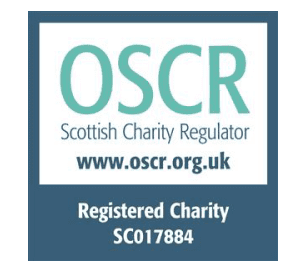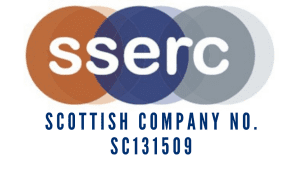Welcome to the Higher Chemistry Page.
Here you can find links to various of our resources for experimental work that could help to support teaching of the course.
The resources are accessed from the unit pages – even though the nature of the units as such is rather questionable these days they provide a convenient division. You can get to these from the tabs below.
Alternatively you can use the search facility or you can find a list of all the chemistry resources here.
If you think activities of ours are of use in areas of the course we have not mentioned, please let us know so we can add the information in.
Use the links below to find the resources you are looking for:
a) Periodicity
The first 20 elements in the Periodic Table are categorised according to bonding and structure.
Silicon and silanes from sand (Demo) – Making silicon and silanes from the reaction between magnesium and silicon dioxide
b) Structure and bonding
i) Types of chemical bond
ii) Intermolecular forces
Polymer Slime – Making slime from borax and PVA glue – and looking at the properties and the composition varies. (Mainly aimed at lower down the school but can be a fun introduction).
Hydrogels – A series of experiments on hydrogels and their properties.
Amazing Penny Experiment – A simple experiment to investigate surface tension.
c) Oxidising & Reducing Agents
Growing silver trees (Demo) – a displacement reaction with copper wire and silver nitrate that produces dentritic crystals of metallic silver.
Blue Bottle (Demo) – Methylene blue is reduced to a colourless form in alkaline solutionj by a reducing sugar. Shaking the bottle allows oxygen to reverse this.
Fire writing (Demo) – Draw a trail on filter paper with sodium nitrate and dry it. Then light end of the trail and fire will smoulder its way along the route.
Genie in a bottle (Demo) – exothermic catalytic decomposition of hydrogen peroxide by potassium iodide
Hot Stuff (Demo) – spontaneous reaction between propan-1,2,3-triol (glycerol) and potassium manganate VII.
Screaming jelly baby (Demo) – Molten potassium chlorate V causes rapid combustion of sugar in a jelly baby.
Traffic lights (Demo) – a variant on the blue bottlle reaction
This unit deals with a lot of organic chemistry, in particular the chemistry of compounds found and used in food and a variety of consumer products.
Use the links below to find the resources you are looking for:
1) Esters, fats and oils
Esters – naming, structural formulae and uses.
Esters condensation and hydrolysis reactions.
Food Science – A series of reactions, one of which is a simple method of making small samples of a few esters..
Finding an Equilibrium Constant – An Advanced higher activity but it is an experiment to make esters and so could be used here.
Biodiesel – A range of investigations based around the production and testing of Biodiesel from vegetable oil
Fats and oils
Saturated and unsaturated fats and oils.
Melting points of oils and fats, through intermolecular bonding.
2) Proteins
Enzymes as biological catalysts: amino acids and dietary proteins.
Enzymic browning – An investigation into the enzyme catalysed browning of apples.
Condensation reactions to make proteins: amide link & peptide link.
Digestion, enzyme hydrolysis of dietary proteins.
3) Chemistry of cooking
Flavours in foods.
Maillard Reactions – Maillard reactions are responsible for many colours and flavours in foods – this quick and simple experiment demonstrates some of these.
Influence of functional groups on solubility, boiling points and volatility.
Aldehydes as sources of flavour and aroma.
Aldehydes and ketones, straight and branch chained, systematic names, structural formulae and isomers. (for compounds with no more than eight carbon atoms in their longest chain.)
Oxidation reactions of aldehydes and ketones.
Silver mirror (Demo) – Ammoniacal silver nitrate is prepared and this is reduced in a flask by a reducing sugar or aldehyde leading to a coating of silver on its inside.
Effect of heat on proteins, denaturation of proteins.
4) Oxidation of food
Alcohols, branch chained, systematic names, structural formulae and isomers. (for compounds with no more than eight carbon atoms in their longest chain.)
Hydrogen bonding. – diol, triols and the effect of hydrogen bonding on properties of these molecules.
Primary, secondary and tertiary alcohols, oxidation reactions and products, oxidising agents.
Carboxylic acids, branch chained, systematic names, structural formulae and isomers.
Reactions of carboxylic acids to include reduction and reactions with bases to form salts.
Reaction of oxygen with edible oils.
Oxidative Rancidity – A simple investigation into the oxidation of fats.
Antioxidants. Ion-electron equations for the oxidation of antioxidants.
Colourless orange or blue (Demo) – A demo version of the Briggs-Rauscher reaction as used in the antioxidants workshop.
Antioxidants – This is a range of investigations based around the Briggs-Rauscher oscillating reaction to look at antioxidant levels in fruits and teas (though the method can be adapted for any source of antioxidants).
Vitamin C in Vegetables – Activity to determine the concentration of Vitamin C in fruit and vegetables by titration against DCPIP
5) Soaps, detergents and emulsions
Hydrolysis of esters. Structure of soap ions including covalent tail, (hydrophobic), and an ionic head (hydrophilic)
Cleansing action of soaps.
Production, action and use of detergents.
Emulsion and emulsifiers and their formation and use in food.
Emulsions – A simple investigation into emulsions and emulsifiers.
6) Fragrances
 Essential oils from plants: properties, uses and products.
Essential oils from plants: properties, uses and products.
Oranges are the only fruit – An activity involving (amongst other things) the extraction of D-limonene from orange peel
Terpenes: functional group, structure and use.
Terpenes – A series of activities looking at terpenes
Oxidation of terpenes within plants.
7) Skin care
The damaging effect of ultraviolet radiation (UV) in sunlight on skin and the action of sun-block.
Sunscreens and Cyanotypes – An adaptation of the historic cyanotype photographic process to enable quantitative investigation of uv in sunlight and the effect of sunscreens.
Formation of free radicals in UV light.
Structure, reactivity and reactions of free radicals.
Free radical scavengers in cosmetic products, food products and plastics.
Reaction of free radical scavengers with free radicals to prevent chain reactions
Lip Balm – Pupils design and make their own lip balm product. (This doesn’t fit exactly into any subcategory but perhaps a choice of a uv absorber could tie it in to this section)
Use the links below to find the resources you are looking for:
a) Getting the most from reactants
availability, sustainability and cost of feedstock(s); opportunities for recycling; energy requirements; marketability of by-products; product yield.
Balanced equations, mole ratio(s) of reactants and products.
Determination of quantities of reactants and/or products using balanced equation, the gram formula masses (GFM), mass and moles.
Magnesium Burning – Using bottle tops held with wire instead of a crucible. Mass is measured before and after.
Determination of quantities of reactants and/or products using balanced equations, concentrations and volumes of solutions and/or masses of solutes.
Calculations of mass or volume ( for gases) of products, assuming complete conversion of reactants.
Percentage yield and atom economy.
Biodiesel – A range of investigations based around the production and testing of Biodiesel from vegetable oil.
Rocks to Riches – analysis of copper content of ‘ores’ followed by extraction of copper by leaching and electrowinning.
Limiting reactants and excesses identified
b) Controlling the rate
i) collision theory
Light sticks (Demo) – using the chemicals from commercially available light sticks (or glow sticks) to carry out a reaction investigating the effect of temperature on a chemical reaction
Rhubarb Rhubarb – The demo uses a stick of rhubarb to stir a beaker of dilute potassium manganate VII, the solution goes clear. And a pupil version of the same reaction allows investigations of the factors affecting rate of reaction.
Thiosulphate acid reaction – microscale – A small scale version of the classic rate of reaction experiment.
ii) Reaction pathways
Bleaching Blue Food Dye – Reaction to determine rate constant and order of reaction from the bleaching of blue food colouring by domestic bleach. (Aimed at Advanced higher but easily adapted)
Catalyst at work (Demo) – Rochelle Salt and hydrogen peroxide, catalysed by cobalt chloride, shows a different colour intermediate complex
Elephant’s Toothpaste (Demo) – Classic demonstration showing hydrogen peroxide decomposing due to catalysis by potassium iodide.
Genie in a Bottle (Demo) – another demonstration of the catalytic breakdown of hydrogen peroxide.
Colourful catalysis (Demo) – a visually attractive and colourful reaction between sodium thiosulfate and hydrogen peroxide in the presence of universal indicator.
Rhubarb Rhubarb – A workshop using rhubarb to decolourise permanganate in order to follow the rate of reaction, looking at concentration and surface area (and possibly temperature).
Thiosulphate acid reaction – microscale – a small scale procedure for investigation into the factors affecting rate of reaction..
iii) Kinetic energy distribution
c) Chemical energy
Hot ice – A supersaturated solution of sodium ethanoate instantly solidifies into an ‘ice’ tower in an exothermic process.
Cannon fire (Demo) – Potassium manganate VII catalyses breakdown of hydrogen peroxide mixed with ethanol. Burning ethanol/peroxide is quiet but loud bangs appear on addition of parmanganate
Cool Experiment – An endothermic reaction freezing a beaker to the bench – Barium hydroxide and ammonium thiocyanate.
Dynamite soap (Demo) – Exploding hydrogen/oxygen bubbles generated by electrolysis of water
Biodiesel – A range of investigations based around the production and testing of Biodiesel from vegetable oil. Calculations of bond energies of oil and biodiesel can be done to compare heat output as above
d) Equilibria
Reversible reactions, dynamic equilibrium, altering equilibrium position.
Equilibrium and Le Chatelier (Demo) – the effect of temperature on equilibrium – colour changes of the octahedral hexaaquocobalt (II) cation and the tetrahedral tetrachlorocobaltate (II) anion
A Spectacular Reversible reaction – changing a copper solution between the blue of an ammonia complex and the green of a chloride one.
Equilibrium of Carbon Dioxide in Water – a simple, fun activity using methyl red and a Luer-lock syringe to show the effect of pressure on the solubility of CO2 in water.
e) Chemical analysis
i) Chromatography –
(son of) Flash Chromatography – Flash chromatography carried out in a syringe can be used to separate samples of food dyes or plant pigments.
TLC of spearmint oil – Analysis of terpenes in Spearmint essential oil by TLC
TLC of amino acids in Soy Sauce – an investigation into the different amino acids that can be found in different types/brands of soy sauce.
ii) Volumetric titration –
Vitamin C Drops – Determining the concentration of Vitamin C in a a variety of fruit juices using a simple titration with iodine.
Vitamin C in Vegetables – Determining the concentration of Vitamin C in a vegetables by titration with DCPIP.
Biodiesel – A range of investigations based around the production and testing of Biodiesel from vegetable oil. It includes a back titration with sodium thiosulphate to determine the iodine number.
 According to the SQA “The assignment assesses the application of skills of scientific inquiry and related chemistry knowledge and understanding. Candidates research and report on a topic that allows them to apply skills and knowledge in chemistry at a level appropriate to Higher. The topic must be chosen with guidance from teachers and/or lecturers and must involve experimental work.”
According to the SQA “The assignment assesses the application of skills of scientific inquiry and related chemistry knowledge and understanding. Candidates research and report on a topic that allows them to apply skills and knowledge in chemistry at a level appropriate to Higher. The topic must be chosen with guidance from teachers and/or lecturers and must involve experimental work.”
The intention being that it should act as preparation for the Advanced Higher project.
SSERC was involved in the preparation of various exemplars on behalf of SQA for the previous version(s) of the Higher. While some of the background, ‘focus questions’ for instance, are no longer relevant, we believe the experimental work can still be the basis of good assignment projects.
The activities are:
Alcohol – A series of activities looking at: alcohol content of wine, sulphites in wine and sugar in alcopops
Antioxidants – an activity using the Briggs Rauscher reaction to look at antioxidant activity in different fruits/vegetables/teas and also possibly looking at the effect of cooking or storage.
Biodiesel – making and testing biodiesel: a variety of oils can be used for comparisons.
Enthalpy – a series of reactions looking at: enthalpies of neutralisation.
Vitamin C – an investigation into the amount of vitamin C in various fruit and vegetables.
Water analysis – a series of experiments that can be used to investigate the concentrations of various contaminants in water: phosphate, nitrate, iron, calcium etc.
The PPA activities from the old Higher are still widely used. However, some considerable time has elapsed since they were devised and some aspects, particularly the Health & Safety information is out of date. Accordingly we have produced revised versions of all the experiments as well as model risk assessments.
All the ones we can find are linked below.
Unit 1 PPA 1: Effect of concentration on the rate of reaction
Unit 1 PPA 2: Effect of temperature on the rate of reaction
Unit 1 PPA 3: Enthalpy of combustion
Unit 2 PPA 1: Identifying carbonyls
Unit 2 PPA 3: Factors affecting enzyme activity



